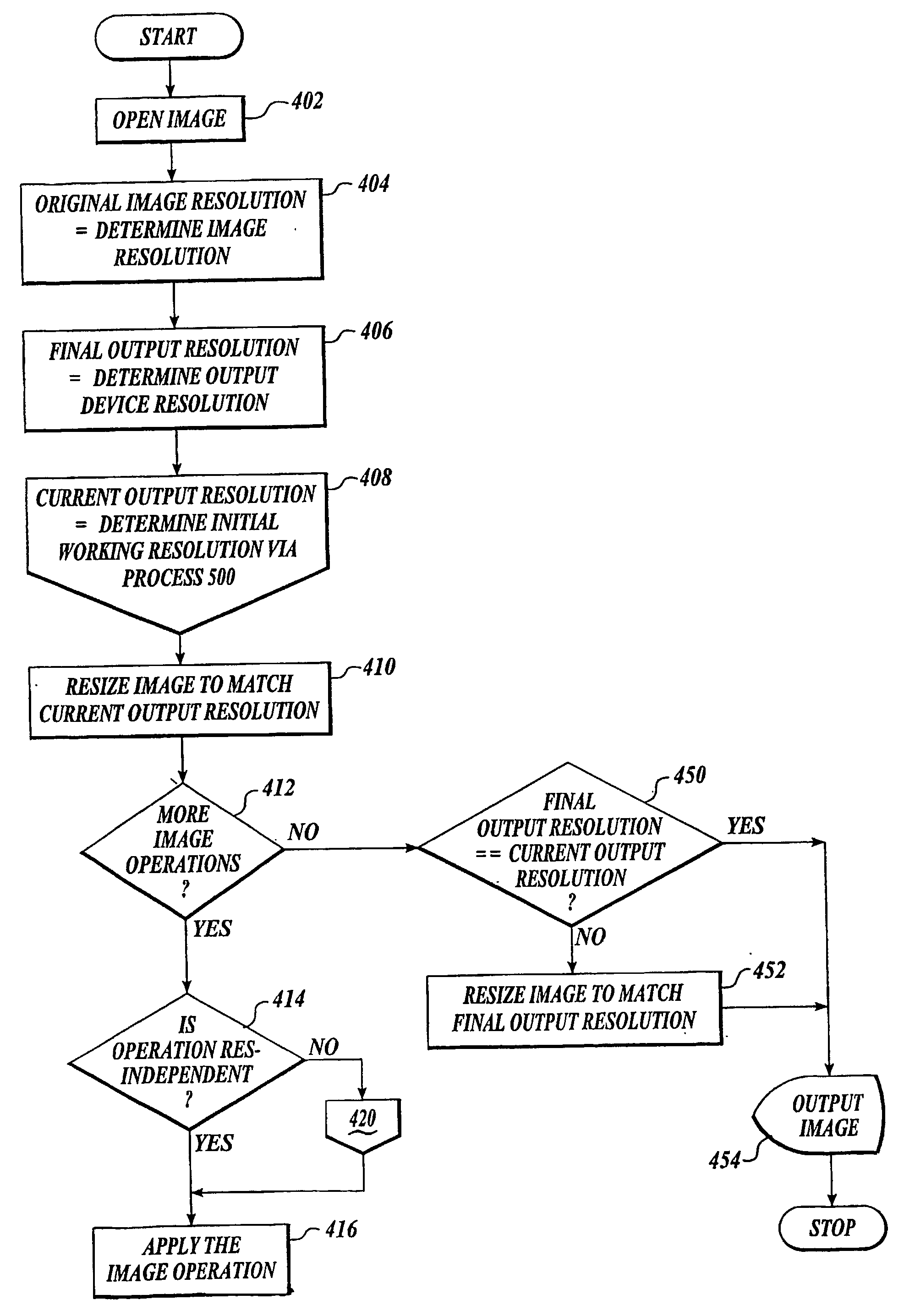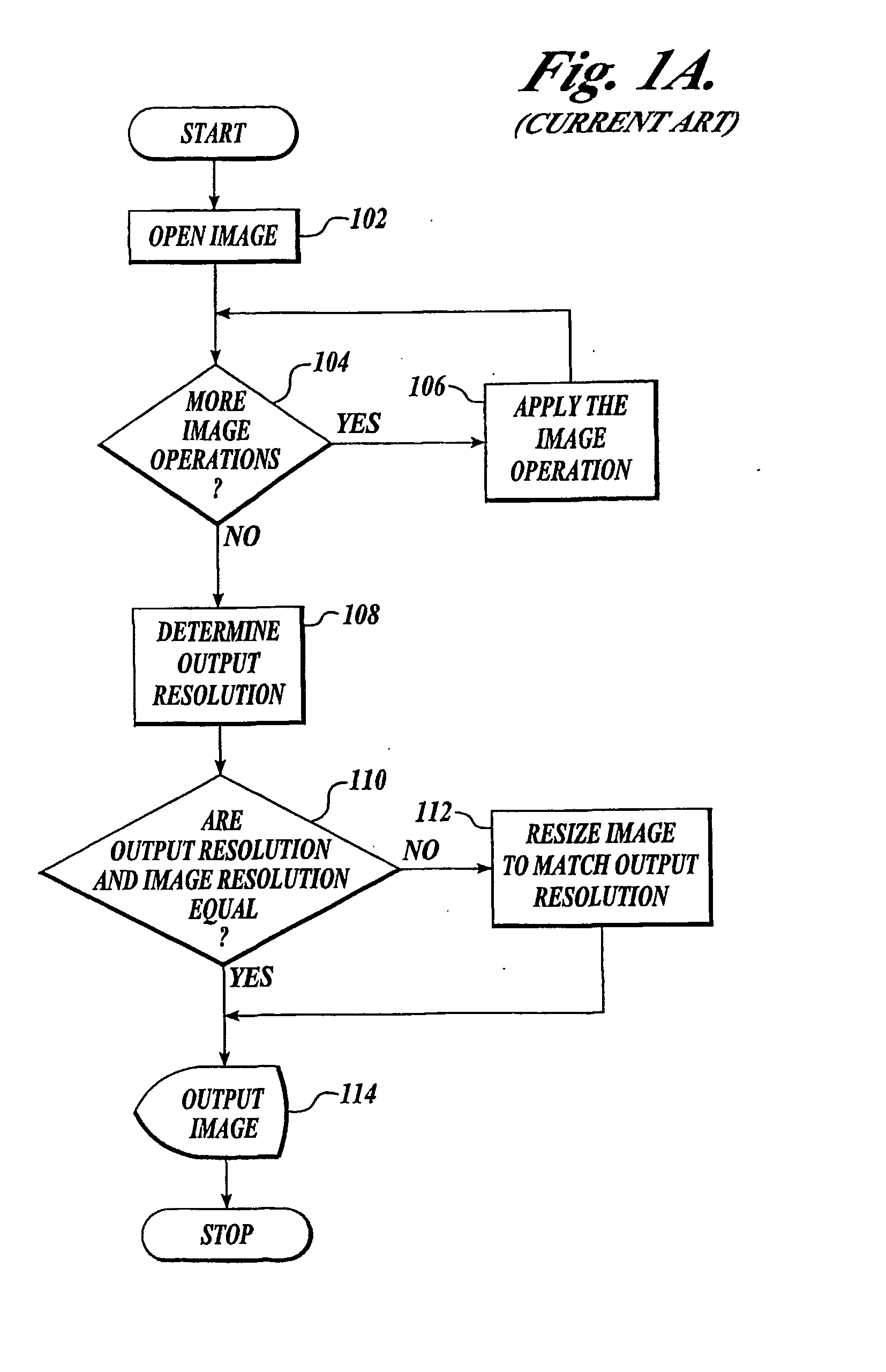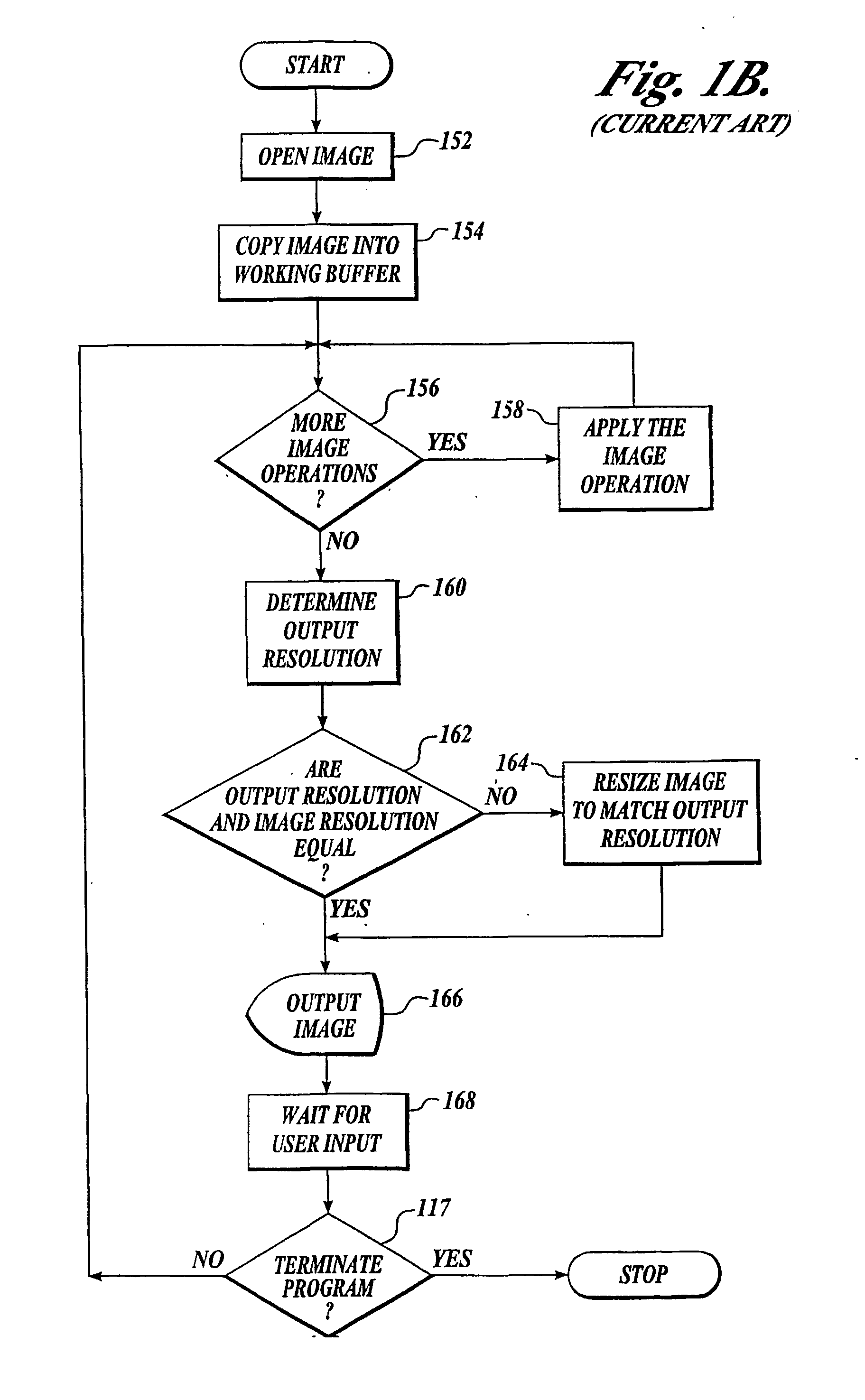Techniques for resolution independent rendering of images
- Summary
- Abstract
- Description
- Claims
- Application Information
AI Technical Summary
Benefits of technology
Problems solved by technology
Method used
Image
Examples
Embodiment Construction
[0052] The present invention was originally targeted for deployment on image processing servers, as part of an ASP (Application Service Provider) model that are deployed on systems handling between hundreds to thousands of simultaneous operations at one time. What is desired is a solution that is scalable across many computers. More importantly, it provides consistent results across all image resolutions regardless of the size of the image rendered, but with a decrease in rendering time as the output resolution decreases.
[0053] It should be noted that image data could range from between low-resolution (such as 320.times.240) images up through several mega-pixels images (such as 3000.times.3000 pixels). Significant performance improvements are realized if a model is developed that permits rendering of these huge images, but performed on low-resolution image data (such as 320.times.240). This provides not only quick display of images, but also reduces the amount of image data that mus...
PUM
 Login to View More
Login to View More Abstract
Description
Claims
Application Information
 Login to View More
Login to View More - R&D
- Intellectual Property
- Life Sciences
- Materials
- Tech Scout
- Unparalleled Data Quality
- Higher Quality Content
- 60% Fewer Hallucinations
Browse by: Latest US Patents, China's latest patents, Technical Efficacy Thesaurus, Application Domain, Technology Topic, Popular Technical Reports.
© 2025 PatSnap. All rights reserved.Legal|Privacy policy|Modern Slavery Act Transparency Statement|Sitemap|About US| Contact US: help@patsnap.com



